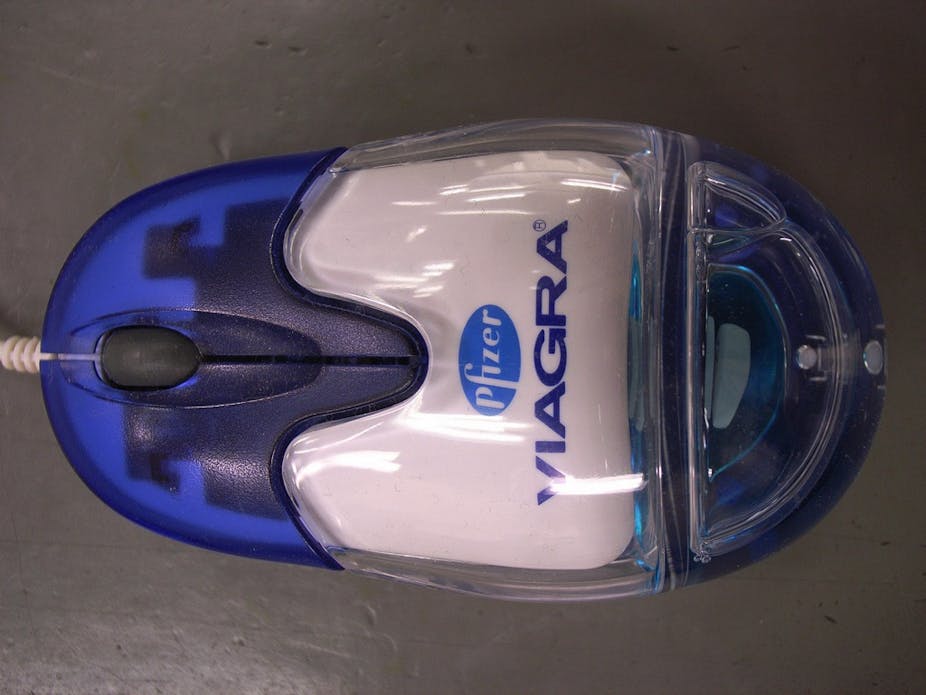TRANSPARENCY AND MEDICINE – A series examining issues from ethics to the evidence in evidence-based medicine, the influence of medical journals to the role of Big Pharma in our present and future health.
Here Wendy Lipworth and colleagues talk about the impact that even small branded gifts have on doctors’ prescribing behaviour.
You should be able to safely assume that your doctor’s recommendations are evidence-based and in your best interests rather than driven by advertising. And this is precisely why we should be concerned about the plethora of drug company paraphernalia scattered around doctors’ waiting and consultation rooms, surgeries, kitchens and elsewhere.
It’s obvious why we worry about overtly manipulative practices, such as companies paying for overseas trips for doctors and their families, and providing other forms of lavish entertainment. This kind of generosity is likely to make doctors feel indebted to these companies and more likely to prescribe their products.
But while such practices attract critical media attention, they’re not the most common, and, indeed, might not be the most effective form of pharmaceutical marketing. Even small “gifts”, such as the ubiquitous post-it note or pen bearing a medicine’s name, or a free sample of a drug, have the potential to influence doctors. The effect is that you are prescribed medicines that are either not needed or are more expensive than alternatives.

This might seem surprising. After all, doctors are highly-educated, highly-trained professionals who undoubtedly have their patients’ best interests at heart. But they are also human, and even small gifts have the potential to create an unconscious desire to reciprocate by prescribing a company’s product.
Indeed, small gifts can be even more influential than large gifts, because – precisely as a result of their small value – they operate insidiously, with doctors usually remaining unaware of their ability to influence their behaviour.
What’s more, because of their conspicuous nature, small gifts are often more likely than larger ones to demean the profession by producing the appearance of bias or conflict of interest, even where none exists.
While it’s difficult to prove that patients are actually disadvantaged by such gift-giving, the mere possibility of harm is sufficient justification to curtail a clearly unnecessary practice. This is not to oppose all marketing activities, which – at least in principle – have the capacity to provide useful information to prescribers.
Many professional organisations have taken steps — together with Medicines Australia (the pharmaceutical industry’s peak body) — to limit gift giving. Gifts of stationery branded with specific drug names, for instance, are no longer recommended by Medicines Australia. The Australian Medical Association (AMA) and professional colleges, such as the Royal Australasian College of Physicians, also have codes of ethics outlining acceptable behaviour with respect to interactions with industry.
But while the pharmaceutical industry and the medical profession have incrementally increased restrictions on pharmaceutical marketing, both continue to accept extensive contact, and what constitutes acceptable behaviour remains highly subjective. They still allow for the continuation of other inappropriate practices, such as product brand name reminders on medical equipment, company-branded items of stationery and various kinds of support for education – as long as these are not deemed “excessive”.

So why isn’t the community deeply concerned? Partly because the medical profession is so trusted that its activities are rarely questioned; partly because many of these interactions don’t occur in the public eye and partly because the lay and medical communities don’t feel the effects of pharmaceutical marketing.
This latter is due to the fact that the Australian Pharmaceutical Benefits Scheme (PBS) provides generous subsidies for many expensive medicines. Patients need only contribute the “co-payment” which, at present, is capped at $35.40 for most PBS-listed medicines, and $5.80 if patients have a concession card or reach the safety net.
As taxpayers, we all foot the bill for excessive or inappropriate prescribing. The PBS cost $7,679.3 million in the 2009 financial year, and over the ten years to 2004–05, this cost grew by nearly 13% each year.
Every dollar spent on an unnecessary (or unnecessarily expensive) medicine is a dollar that can’t be spent on something else. Ultimately, gifts provided to doctors are not paid for by drug companies, but by patients, insurers, and the government. In other words, these costs are borne by us. So let’s face it, doctors don’t need pensioners to buy them free pens.
This is the second part of Transparency and Medicine. You can read the previous instalment by clicking the link below:
Part One: Power and duty: is the social contract in medicine still relevant?
Part Three: Show and tell: conflicts of interest undeclared for clinical guidelines
Part Four: Eminence or evidence? The ethics of using untested treatments
Part Five: Don’t show me the money: the dangers of non-financial conflicts
Part Six: Ghosts in the machine: better definition of author may stem bias
Part Seven: Clearing the air: why more retractions are good for science
Part Eight: Pharma’s influence over published clinical evidence
Part Nine: Insight into how pharma manipulates research evidence: a case study
Part Ten: Why data from published trials should be made public
Part Eleven: Open disclosure: why doctors should be honest about errors
Part Twelve: Reaching full and open disclosure for universities, medical schools and doctors
Part Thirteen: Ethics of accepting suppliers’ gifts in the business v medical world
Part Fourteen: Conflicts of interest in guideline development: the NHMRC responds
Part Fifteen: Consumer input in Medicines Australia’s code of conduct review

